The dual-motored model has two SoundTraxx decoders and front and rear speakers. In addition, the model’s lines and details match its famous prototype.
The prototype
Between 1969 and 1971, General Motors’ Electro-Motive Division delivered 47 DDA40X locomotives to the Union Pacific RR. Since UP received the first DDA40X a few weeks before the 100th anniversary of the completion of the transcontinental railroad, the locomotives were nicknamed “Centennials.”
The locomotive rode on two “D,” or four-axle, trucks. The designation A stood for cab unit, while “X” indicated the locomotive’s experimental status. The “40” stood for the 16-cylinder 645E3 engine that was also used in EMD’s GP40 and SD40.
Each DDA40X was equipped with two of these 3,300 hp prime movers for a total 6,600 hp, making the Centennials the most powerful diesel-electric locomotives ever built. They were also geared to run at a top speed of 90 mph.
The UP began retiring the locomotives in 1984. However, 13 Centennials have been preserved.
The model
The model’s dimensions match drawings in Model Railroader Cyclopedia: Vol. 2, Diesel Locomotives (Kalmbach Publishing Co., out of print).
The plastic body shell features an exceptional level of detail. See-through grills are mounted over separate fans on the roof. Other individual details include sunshades and the firecracker radio antenna on the cab and brake cylinders on the truck sideframes.
The cab interior is detailed with a brake stand, cab speedometer, and other separate detail parts. There are also seats for the engineer, fireman, and head-end brakeman. No figures are included, so the modeler will have to add his own.
The models are available in multiple road numbers with the as-delivered paint scheme featuring UNION PACIFIC RAILROAD in the shield herald and the later paint scheme with only UNION PACIFIC in the shield.The paint and lettering on our review samples matches prototype photos; even the tiny FIRE EXTINGUISHER INSIDE stencils are legible under magnification.
Eight screws hold the body shell to the die-cast metal frame. First, I removed the front and rear couplers. Then I removed the screws between the fuel tank and the trucks. Two more screws attach the plastic fuel tank to the die-cast metal frame. Once I removed those screws I easily lifted off the fuel tank. This reveals two additional screws in the center of the frame that I removed. I could then easily lift off the body shell. Note: Don’t remove the eight smaller screws that are visible on the bottom of the frame. These hold the motors in place.
The two motors sit in the center of the frame. The front motor, which powers the front truck, has dual brass flywheels, while the rear motor, which powers the rear truck, has a single flywheel.
A printed-circuit board is mounted on top of each motor. The DCC version features two SoundTraxx sound decoders. There are also two vertically mounted 28mm speakers: one behind the cab and the another at the rear of the frame.
The DC version features two eight-pin and nine-pin DCC sockets. Frame-mounted speaker enclosures are also included. To convert the DC version to DCC, two decoders are required.
In addition to front and rear headlights, the model has a flashing beacon on the cab roof. Instructions for replacing these light bulbs are included with the model. Our review samples (nos. 6904 and 6925) don’t have ditch lights, which would have been found on Centennials at the end of their careers in the 1980s.
The model ran smoothly on our DC and DCC test tracks. Like other sound-equipped models, the DDA40X requires a lot of voltage – 7.75V – to start moving on a DC layout. I appreciated that the lights and sounds came on earlier at 6V.
As the speed charts on the right show, the model has a prototypical speed range. The model’s top speed was slightly higher during DC speed tests.
After setting the model’s decoders from 28 speed steps to 128 steps, its low speed in DCC was only 1 scale mph.
Like the prototype, the DDA40X requires broad curves. I ran the model through a 28″ radius curve and no. 6 turnouts without any problems.
The model doesn’t have traction tires, yet still produced 5 ounces of drawbar pull, which is enough to haul 70 freight cars on straight and level track. The Centennial is also quite a hill climber. The model hauled a 23-car train up a 3 percent grade at 50 scale mph.
Sound
According to Athearn, the HO scale locomotive features sounds recorded from prototype DDA40X no. 6936. In both DC and DCC the dual decoders and speakers accurately replicate the sound of two separate diesel engines. Like the prototype, the separate engine rpm went in and out of phase.
The horn sounds like prototype videos that I’ve seen. The decoder features two other Leslie air horn options.
On a DC layout, the sounds are automatic, unless you have a sound controller like a Model Rectifier Corp. Tech 6. These automatic sounds include a bell that turns on between 8.5 and 9V and a grade crossing signal that sounds when the direction switch is flipped. The automatic sounds can be changed or turned off, but this programming requires a Tech 6 or a DCC system.
In DCC, user-triggered functions include the horn, bell, and dynamic brake fans. Engine sounds can be fine-tuned, including optional manual notching. That way the engine rpm can be increased or decreased independently of the locomotive’s speed.
A list of programmable configuration variables (CVs) is included. The CVs control many of the lighting, sound, and performance features. A more extensive manual with tips for programming the decoder is also available on the Athearn website or at www.soundtraxx.com.
The Athearn DDA40X is the first HO scale model I’ve heard that accurately replicates the sounds of a dual-motored locomotive. The model’s pulling power is also worthy of its massive prototype.
Manufacturer
Athearn Trains
2883 E. Spring St., Ste. 100
Long Beach, CA 90806
www.athearn.com
Era: 1969 to 1985
Features
- All-wheel drive and electrical pickup
- Blackened metal RP-25 contour wheels in gauge
- DCC quick plugs on direct-
- current version (Note: Two decoders required for DCC operation)
- Dual-mode SoundTraxx Digital Command Control sound decoders (DCC version only)
- Etched, see-through walkways
- Front and rear speakers (DCC sound version only)
- McHenry scale magnetic knuckle couplers at correct height
- Minimum radius: 28″
- Two flywheel-equipped five-pole skew-wound motors
- Weight: 1 pound 9 ounces
- Wire grab irons






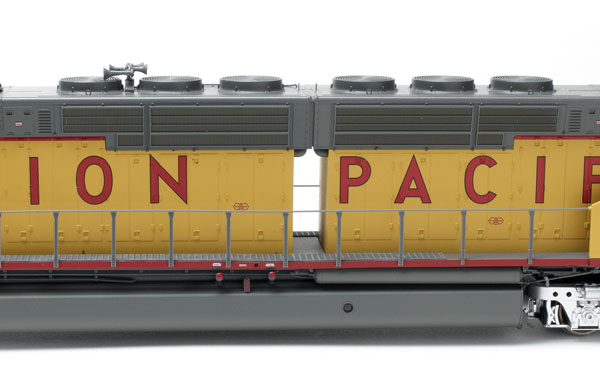

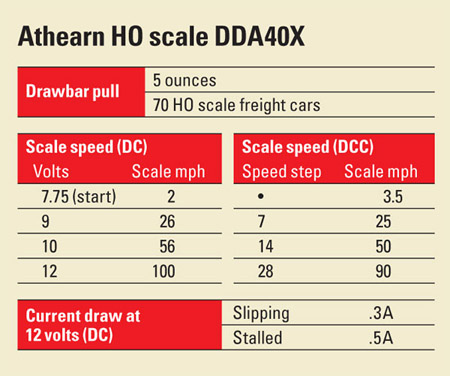

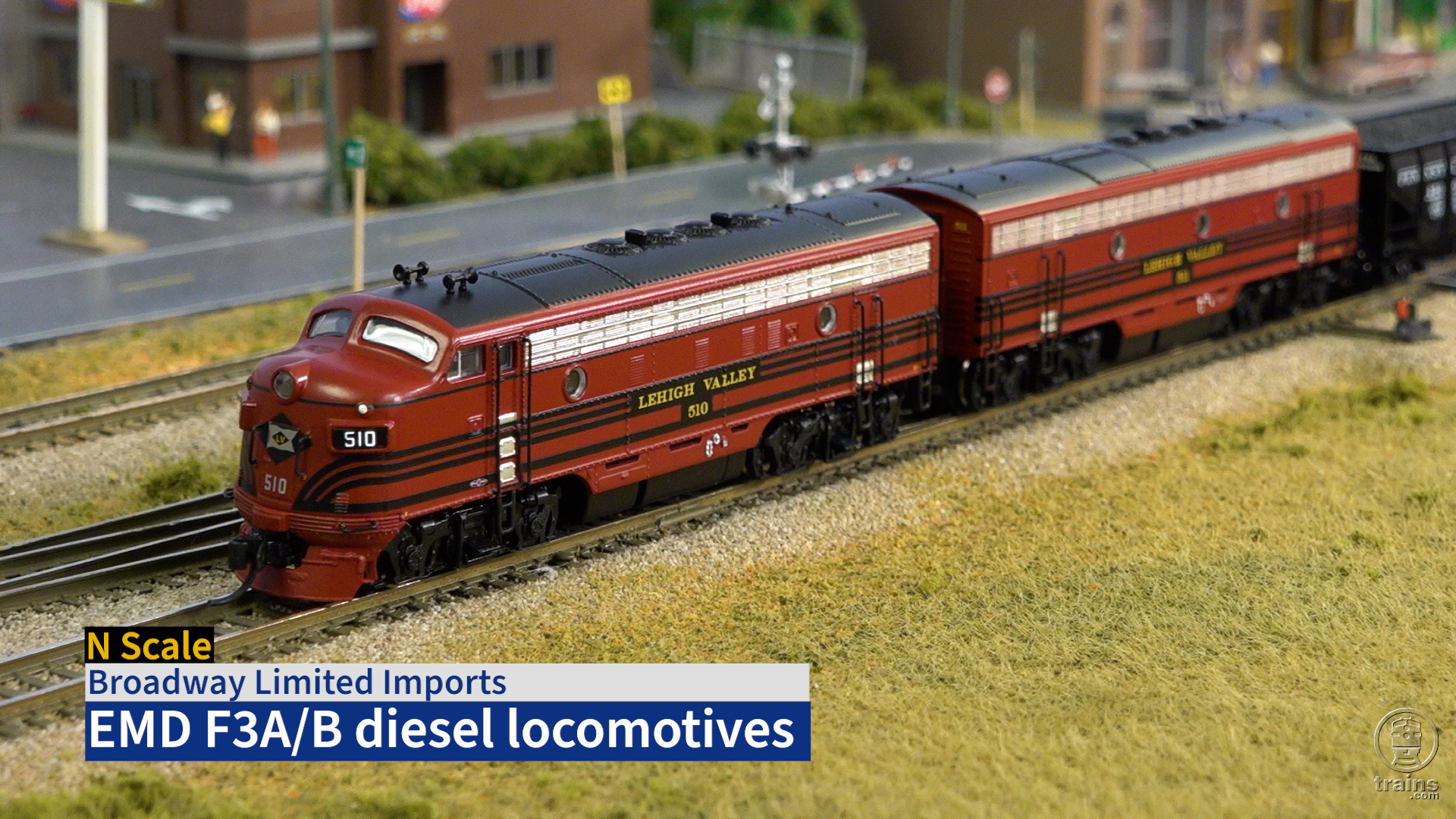

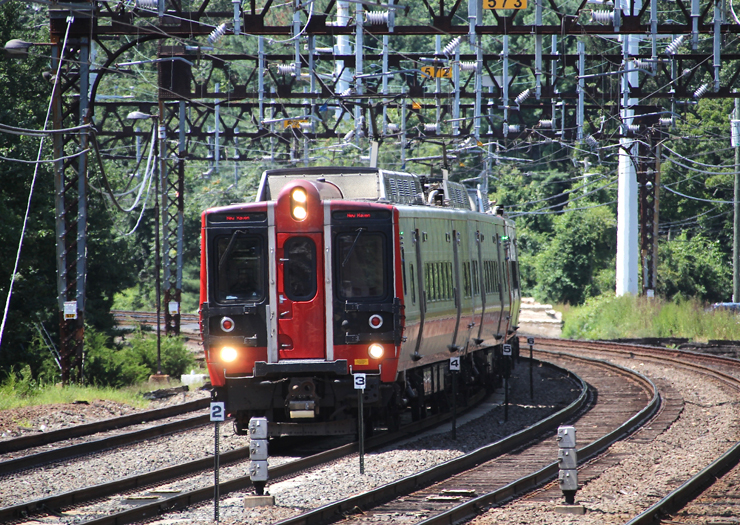
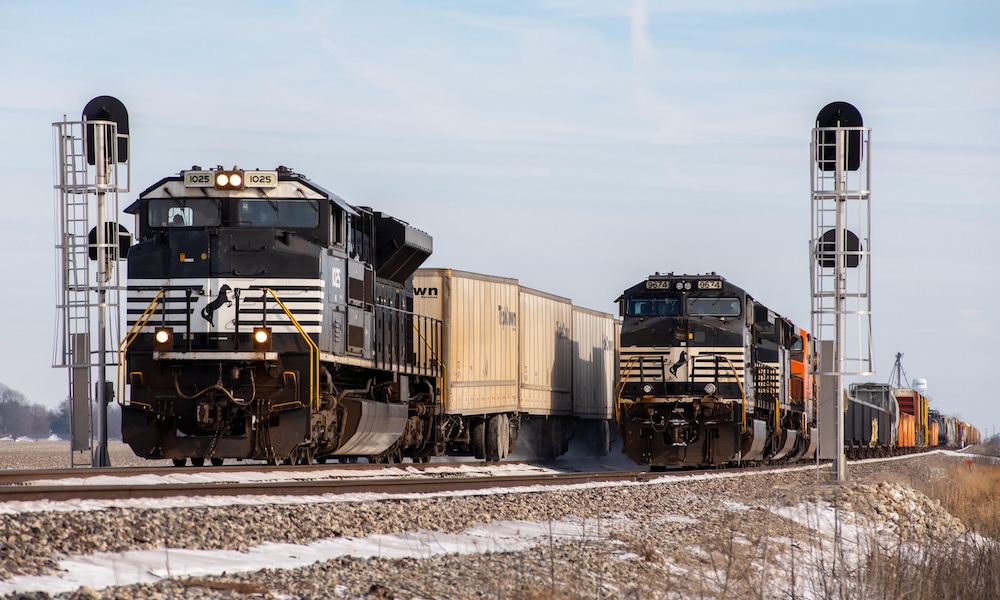




While these are good representations of the actual prototype, the models themselves (have two) were somewhat disappointing in that their pulling capability was much less than expected. One unit is sound equipped the second unit is non-sound. I added 1.5 ounces of weight in areas where the speakers would have been placed, over the wheel area. While it had a good effect in the numbers of cars I could pull, I found that there was still a good degree of slippage on a 1.5 degree incline pulling 50 weighted cars. So what I have learned is keep the consist’s shorter and they still look sharp especially when coupled together with an appropriately numbered SD-40 long nose.
This has GOT to be THE best Diesel locomotive Athearn has ever produced…. and they produced a ton of 'em!
Although the "DDA" is said to mean 4-axis truck and cab-unit in Athearn's shieet too, is this really secure?
Every book I owned, did not write such a thing. Please tell me the basis.
great looking locomotive i am thinking either to get the big boy or this
Item of note: The 6936 is currently "on loan", and is at the Western Pacific RR Museum in Portola California.
Received it 2 weeks ago here in the Netherlands. Look good and runs smooth. Nice Tsunami sound from the front and rear speakers
Waiting for the 6936 to come out!
Thanks once again Athearn! Great job!
Hi RA,
You're correct. The lighting is bulbs not LEDs. I've updated the review.
Thanks for reading,
Dana Kawala
Senior editor
Despite the headlight bulb issue I think that this i one of the finest locomotives Athearn has ever produced!
Whoops, I noticed a typo. The remaining active Centennial is 6936 not 6926. 6936 is the lone survivor still running and is a part of UP's Heritage fleet along with the E Units and the two steamers, 844 and 3985. Athearn's future run will include the 6936 complete with ditch lights and A/C on the cab roof.
Dana, are you sure those headlights are LED's? I haven't taken my DDA40x apart but the lights in my model sure look to be the typical crummy incandescent bulbs that Athearn claims look more prototypical. If, in fact, this loco has LED's it would be a first for Athearn as they are the only major manufacturer still using "bulbs". Also, the only Centennial to ever have ditch lights is the remaining survivor 6926 which is still operable. The other 6900's were out of service by 1985. Ditch lights were not mandated by the FRA until Dec. 31, 1997!